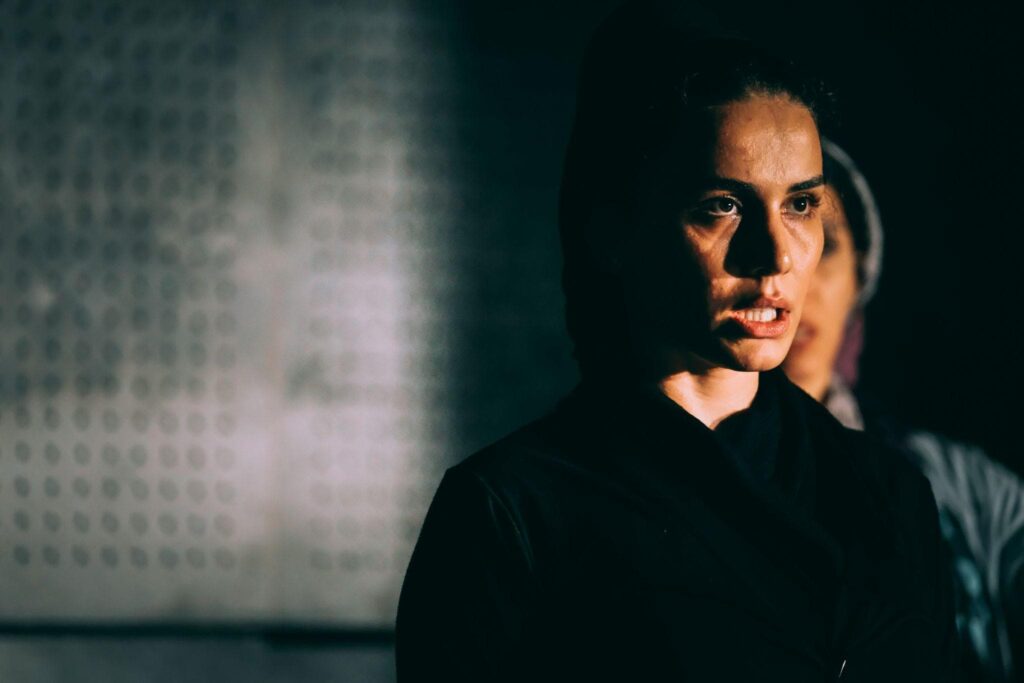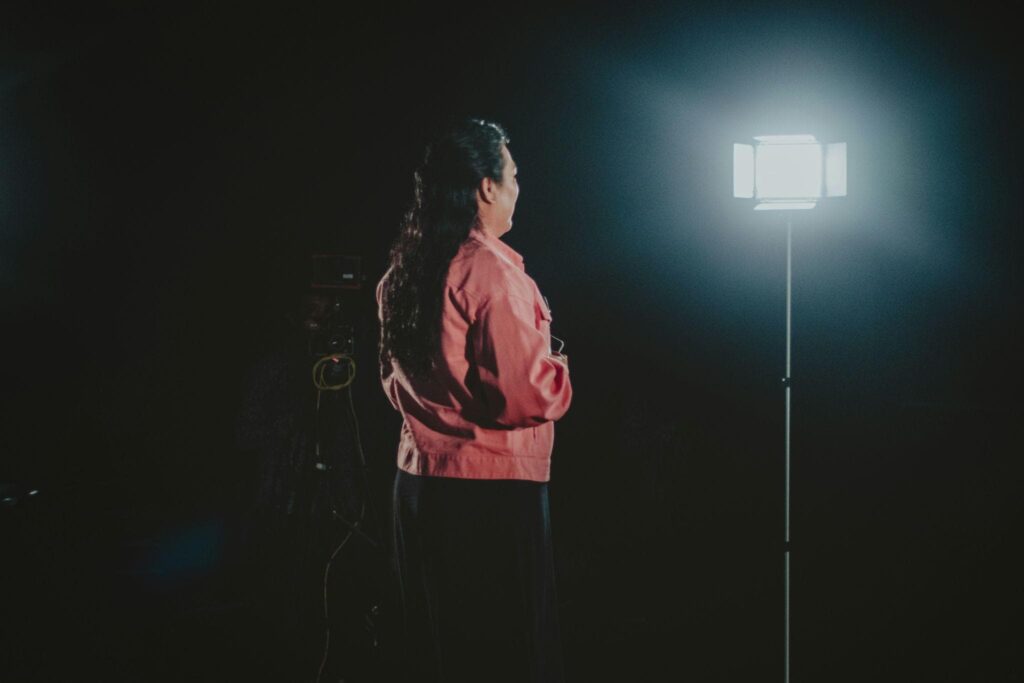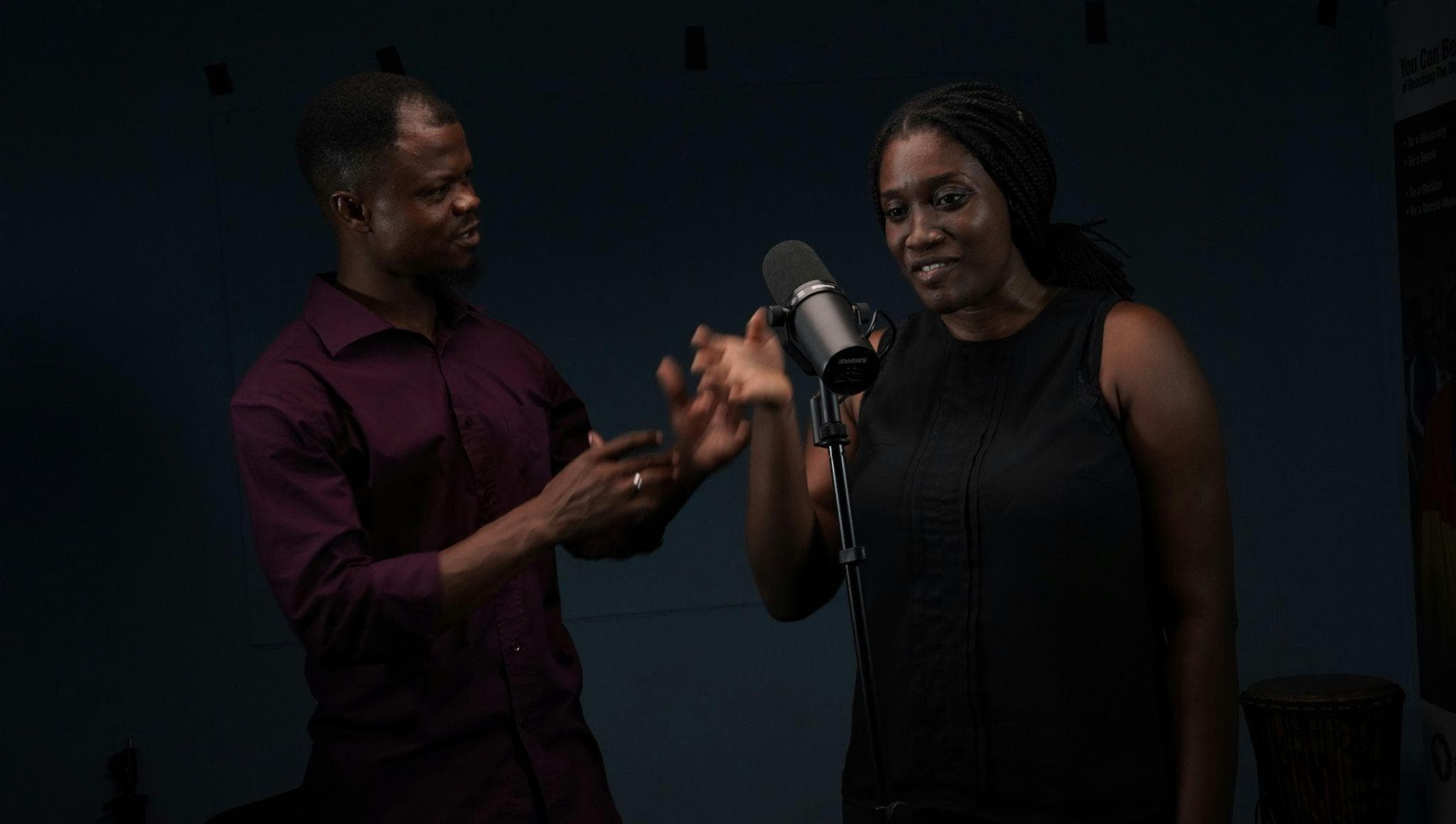Have you ever found yourself utterly mesmerized by an actor, perhaps not just by their striking looks or dramatic movements but by the sheer, captivating power of their voice? It’s a remarkable phenomenon. That subtle inflection, that perfectly timed pause, the sheer resonant force emanating from their vocal cords. It’s a profound testament to the often-underestimated yet immensely impactful role of the human voice in acting. We frequently dissect actors’ physicality, their intricate facial expressions, and their commanding stage presence, but what about their voices? Ah, that’s where true magic often happens, the kind that whispers into your subconscious and resonates long after the credits roll.
How might we ponder whether an actor truly brings a character to vibrant life, making them feel utterly authentic, so distinct that you could pick them out of a crowd with your eyes closed, not just through their physical embodiment but through the nuanced delivery of every single word? The answer lies in recognizing that the voice is far more than a mere instrument for conveying dialogue; it is a profoundly personal, deeply expressive tool. It’s capable of communicating layers of emotion, hidden intent, and character depth in ways that visual cues alone, however brilliant, sometimes cannot. It’s more profound, more intimate, and able to communicate the very soul of a character with a mere shift in tone, a deliberate cadence, or an innate rhythm. And when we consider actors who masterfully wielded their voice, transforming it into a finely tuned instrument of their craft, one name consistently rises to the forefront: Patrick Macnee. He was an artist whose vocal prowess was as distinctive and iconic as his impeccably tailored suits and ever-present bowler hat, setting the stage for a detailed exploration of vocal control, cadence, and rhythm, illuminated by his unforgettable performances. This journey, I hope, will deeply intrigue you, revealing the hidden artistry behind spoken dialogue and, perhaps, just perhaps, make you listen a little more closely to the voices that shape the stories we love.
The Vocal Arsenal: Tone, Cadence, and Rhythm in Classic Acting
Let’s pull back the curtain on something fundamental to truly great acting: the vocal arsenal. What precisely is it that makes one actor’s performance so utterly compelling, so undeniably believable, while another’s might feel… well, a bit flat, even if the lines are the same? More often than not, the secret lies in their command over three interconnected yet distinct elements of vocal performance: tone, cadence, and rhythm. These aren’t just dry, technical terms plucked from an academic textbook or whispered among theatre students; they are the very DNA of how an actor communicates, transforming mere words on a page into vibrant, living expressions of character, raw emotion, and intricate underlying intent.
Think of them, if you will, as the primary building blocks for every single memorable line, every spine-tingling dramatic monologue, every tenderly whispered secret. When these elements are not just understood but truly mastered, they allow an actor to paint with sound, creating a rich, intricate tapestry of meaning that resonates deeply within the audience’s psyche. Without a firm grasp of these components, even the most brilliantly written dialogue, bursting with wit and wisdom, can unfortunately lose its impact, its nuance, its very soul. Understanding these elements isn’t just a prerequisite for aspiring actors trying to find their voice; it’s for anyone who truly appreciates the profound, often subtle, craft behind the spoken word on screen or stage. They are the unseen forces, the silent architects, that contribute mightily to the believability, the profound emotional resonance, and the overall impact of a character’s dialogue, laying down a crucial theoretical groundwork before we dive into specific, fascinating examples from the masters themselves.

Tone: The Emotional Palette of the Voice
Consider, for a moment, the effortless word “hello.” Now, try saying it aloud to yourself. How many different ways can you deliver it? A warm, inviting “hello” to a cherished friend filled with genuine affection. A sharp, almost interrogative “hello?” delivered with a rising pitch when you suspect something is amiss, perhaps a hidden presence. Or maybe a weary, resigned “hello” exhaled after an impossibly long and trying day laden with exhaustion. Each of these interpretations is a pristine example of the profound, often startling, power of tone.
The tone is that incredible, almost magical quality of the voice that effortlessly conveys underlying emotions, specific attitudes, and crucial, unspoken subtext. This is often achieved without the slightest need for additional words or overt gestures. It’s all about the subtle yet significant variations in vocal pitch, the unique timbre or quality of the voice, and the resonance that collectively communicates a feeling. A higher, lighter pitch can, in an instant, convey excitement, nervousness, or even raw fear, making our hearts race along with the character’s heightened state of emotion. Conversely, a lower, richer, more resonant tone might signal unwavering authority, a deep, pervasive sadness, or even a chilling, quiet menace that sends shivers down your spine before a single truly threatening word is uttered.
An actor’s precise, meticulous control over tone is akin to a master painter’s exquisite command of their color palette. They use it with deliberate intent to paint the very emotional landscape of a scene, subtly guiding the audience’s understanding and eliciting a precise emotional response from us, often without any explicit declarations. It’s the tender whisper of burgeoning love, the guttural roar of unbridled anger, the profound sigh of weary disappointment—all communicated not just by the words themselves but by the magnificent, almost limitless flexibility of the human voice. It’s the nuance that makes us truly feel what the character is feeling.
Cadence: The Pacing of Persuasion
If we consider tone to be about the vibrant color of the voice, then cadence is undeniably about its fluid movement, its intricate dance, and its inherent rhythmic flow. It encompasses the delicate rise and fall of the voice, the subtle accelerations and decelerations of delivery, the perfectly placed pauses, and the strategic emphasis within an actor’s dialogue. All of these elements directly impact the audience’s perception of a character’s urgency, thoughtfulness, or even sheer casualness.
Have you ever found yourself breathless, almost swept up in the whirlwind of a character’s excitement or anxiety, as they deliver a rapid-fire monologue? That, my friend, is cadence at its absolute finest, working its magic. A rapid cadence might indeed indicate genuine nervousness, overwhelming excitement, or a character frantically trying to articulate a torrent of thoughts, drawing us in with their frenetic energy. But then, switch that to a slow, deliberate cadence, perhaps with elongated vowels and perfectly measured pauses, and suddenly, you sense deep, careful consideration, profound contemplation, or even chilling, quiet intimidation that makes the very air crackle with unspoken tension.
Actors utilize this varying pace as a dynamic, potent tool to expertly build tension, land a comedic beat with truly impeccable timing, or convey a character’s intricate, often turbulent internal state. It’s a powerful, manipulative force that shapes the audience’s experience and subtly influences the dramatic impact of a scene, much like a master conductor leading a grand orchestra. A perfectly placed pause, for instance, can often be far more powerful, more resonant, than a passionate scream. It allows the moment to breathe, to linger, to sink in before the next verbal strike truly.
Rhythm: The Undercurrent of Character
While cadence focuses on the immediate, moment-to-moment flow of speech, rhythm in vocal acting delves much deeper, exploring the underlying, often consistent, pattern of a character’s voice—it’s almost like their unique, personal musical beat. Think about it: just as different musical genres possess distinct rhythms—a brisk march versus a languid waltz, for instance—so too can characters have an inherent vocal rhythm that profoundly reflects their entire personality, their sociological background, or their current psychological state. Some characters, perhaps perpetually anxious or buzzing with nervous energy, might speak with a naturally hurried, almost staccato rhythm, their words tumbling out quickly. Others might possess a more languid, flowing rhythm, suggesting a calm, deliberate, perhaps even somewhat detached or aristocratic personality.
This isn’t merely about how quickly a single line is delivered; it’s about the consistent, habitual pattern of their speech over an extended period. An actor meticulously establishes and then maintains this unique vocal rhythm, and it becomes an integral, almost subconscious, part of the character’s identity. This deeply ingrained rhythm influences not just how other characters and the audience perceive their lines but, crucially, how they are remembered. A consistent, unhurried rhythm can subtly convey unwavering confidence, a deep-seated, almost pathological hesitation, or a persistent sense of inner turmoil that hums beneath every uttered word. It’s the unique signature of their voice—a subtle yet potent tool that adds profound depth and authenticity, making the character feel truly alive and distinct from anyone else. It’s the barely perceptible hum beneath the grand melody, the consistent pulse that ultimately defines their vocal presence and sets them apart.
Patrick Macnee: A Masterclass in Vocal Artistry
When the topic of vocal mastery in acting arises, particularly regarding the nuanced use of tone and timing, it’s simply impossible not to turn our attention to the unparalleled artistry of Patrick Macnee. He wasn’t merely an actor who flawlessly delivered his lines; he was a virtuoso who understood the human voice as a primary, dynamic instrument capable of painting vivid, complex character portraits with every single syllable. Macnee stands as a quintessential example of an actor who profoundly understood and utilized the power of his voice, making it as integral a part of his iconic characters as any perfectly tailored costume or signature prop. His distinctive vocal qualities became synonymous with his most famous roles, none more so than the eternally dapper John Steed from the beloved series The Avengers.
One could argue, quite convincingly, that Macnee’s voice was far more than just a convenient vehicle for conveying dialogue; it was, in fact, a key component of his charming, sophisticated, and, at times, utterly enigmatic persona. It was the silken thread that meticulously wove together his suave, outwardly composed exterior with the razor-sharp intellect and hidden depths beneath, ultimately creating a character that was both deeply familiar and perpetually intriguing. He didn’t just utter words; he imbued them with a resonant, often wry, delivery that was uniquely, unmistakably his own. He showed us that true expressive power usually lies not in vocal pyrotechnics but in a resonant, controlled tone and an unerring sense of when to speak — and, crucially, when to pause.

Steed’s Signature Sound: Tone and Timing in Action
Let’s delve deeper, shall we, into Steed’s signature sound and truly appreciate Macnee’s tone and timing in action as the unforgettable John Steed in The Avengers. What exactly made Steed so utterly unforgettable, so quintessentially British, so incredibly cool even when facing outlandish threats? A vast, undeniable part of it was Macnee’s seemingly effortless control over tone. His voice, always urbane, impeccably modulated, and possessing a captivating warmth, could deliver a razor-sharp, witty quip with a light, almost dismissive air yet shift in an instant to a tone of grave seriousness when warning of impending danger. He rarely needed to raise his voice to convey authority or urgency; instead, he relied on subtle, nuanced shifts in pitch and resonance. This created Steed’s unflappable, always-in-control persona, a beacon of calm and collected elegance amidst the most chaotic and absurd situations. We inherently trusted him, mainly due to the steady, reassuring quality of his voice.
But it wasn’t just tone; it was his expert use of timing. Macnee understood, with an almost uncanny intuition, the profound power of the pause. He knew precisely when to let a silence hang tantalizingly in the air for maximum comedic effect, allowing a punchline or a droll observation to land with devastating impact. Think of the way he’d often deliver a ridiculously droll, almost understated observation about a bizarre situation, then pause for just a beat, letting the sheer absurdity sink in for both his bewildered fellow actors and, most importantly, for us, the audience. This strategic, almost surgical, placement of pauses and subtle inflections also served to build suspense, making us lean in, holding our breath, waiting for his next measured utterance, knowing it would be significant. Moreover, his impeccable timing enabled him to convey subtle layers of meaning that went beyond the spoken word. A slight hesitation before a response, a knowing glance paired with a seemingly innocuous phrase, could communicate a hidden agenda, a veiled threat, or a deeper, more sophisticated understanding of the situation than he was letting on. These vocal choices were not incidental embellishments; they were integral to Steed’s iconic characterization, making his voice as instantly recognizable and beloved as his charming smile and elegant stride. He wasn’t simply acting; he was performing an intricate, captivating vocal ballet, a masterclass in understated power.
Beyond Steed: Macnee’s Vocal Versatility
While John Steed may undoubtedly be his most celebrated and enduring role, to confine Patrick Macnee’s vocal prowess solely to that character would be a significant disservice to his incredible range and the depth of his artistic talent. Macnee’s vocal versatility extended far, far beyond the dapper spy who saved the world with a well-aimed umbrella. He was an actor who profoundly understood that every character, no matter how minor, deserved a distinct vocal identity, and he meticulously crafted these vocal nuances across his extensive career.
Consider, for instance, his impactful work as a narrator. His voice, which possessed a rich, authoritative, yet always inherently engaging quality, lent itself perfectly to documentary narration. Think of his contributions to the original Battlestar Galactica, where his measured cadence and crystal-clear enunciation added a layer of gravity and gravitas to the fantastical storytelling. You felt instinctively that you were in the capable hands of a true storyteller, guiding you through epic sagas with a comforting yet compelling voice.
Then, there were his various roles as a villain. When tasked with portraying antagonists, Macnee could, with chilling precision, subtly shift his tone from his usual urbane charm to something far more sinister, cold, or even overtly condescending. The underlying rhythm of his speech might become noticeably more clipped, the pitch subtly lower, and a distinct, almost metallic edge could enter his timbre, conveying a quiet menace that was all the more terrifying for its chilling restraint. He didn’t need to shout or bellow to be threatening; a soft, precise, and utterly controlled delivery could be far more unnerving and compelling.
Furthermore, his numerous guest appearances in a wide array of television shows and films consistently showcased his remarkable ability to differentiate characters through deliberate and nuanced vocal choices. Whether playing a bewildered aristocrat caught in a farce, a cunning businessperson orchestrating a hostile takeover, or a delightfully quirky eccentric, his voice would adapt, subtly altering its inherent rhythm, its immediate cadence, and its underlying tone to build a unique and believable persona for each. This distinct adaptability enabled him to inhabit a vast spectrum of characters, each with its distinctive vocal signature. This section truly emphasizes that Macnee’s vocal prowess was not limited to one iconic character; it was a foundational skill, a deep, intuitive understanding of the voice as an instrument, which he applied with consistent brilliance across a diverse range of performances. This versatility solidified his reputation and left an indelible mark as a genuine voice actor of the highest caliber.
Conclusion
As we draw to a close on this fascinating exploration, what profound truths can we glean from this journey into the intricate world of vocal performance in acting? It’s profoundly clear. The often-overlooked yet critical elements of tone, cadence, and rhythm are far more than mere delivery mechanisms for pre-written dialogue; they are, in fact, vital, indispensable tools in the actor’s comprehensive toolkit. They are fundamental to achieving deep character development, expressing genuine emotional resonance, and, ultimately, securing profound audience engagement. These vocal components transform words on a static page into living, breathing, resonating communication that speaks directly to the soul.
The voice, with its myriad subtle inflections, carefully choreographed pacing, and inherent unique rhythm, possesses unmatched power to convey the unspoken, hint at hidden depths of character and forge an intimate, almost primal, connection with the viewer. Patrick Macnee stands as a towering, nearly legendary example in this regard, a true luminary whose enduring legacy powerfully underscores this very point. He was an actor who not only understood but truly utilized his voice as a powerful, expressive instrument, meticulously shaping iconic characters not just with his physical presence and charming demeanor but with every precisely modulated syllable. His unforgettable performances taught us a timeless lesson: that the true strength and depth of a character can lie just as much in the resonant quality of a voice, the precise timing of a perfectly placed pause, or the subtle, almost imperceptible shift in cadence, as it does in any grand gesture or dramatic facial expression. His work, and indeed the work of all vocal masters, compels us to listen more closely to appreciate the delicate yet profoundly significant role of vocal artistry in bringing stories and characters to vibrant, unforgettable life. It should leave us with a heightened awareness that sometimes, the most profound communication happens not just through what is said but through the beautiful, intricate melody of how it is spoken.
